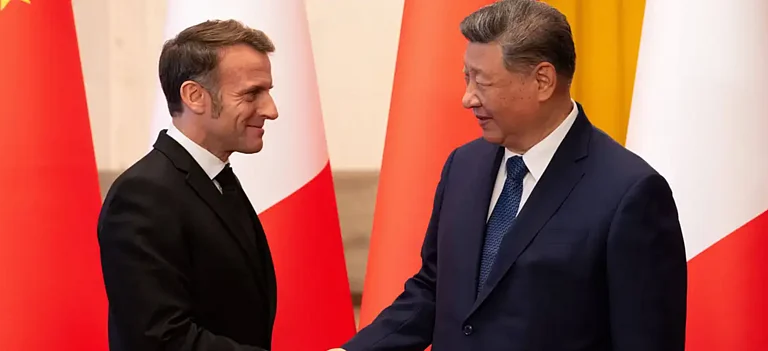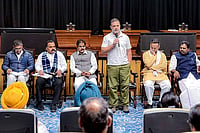
A high-level US delegation met with senior Pakistani officials on Friday to explore potential collaboration in the minerals and mining sector.
The delegation was led by Robert Louis Strayer II, head of the Critical Minerals Forum (CMF), and included US Chargé d’Affaires Natalie Baker.
Both sides reaffirmed their intent to maintain engagement and pursue collaboration consistent with Pakistan’s reform agenda and shared goals for sustainable development, the statement added.
A high-level US delegation met with senior Pakistani officials on Friday to explore potential collaboration in the minerals and mining sector, as Washington intensifies efforts to secure reliable supply chains for critical minerals amid China’s growing dominance in the field.
The delegation was led by Robert Louis Strayer II, head of the Critical Minerals Forum (CMF), and included US Chargé d’Affaires Natalie Baker. The team held discussions with Finance and Revenue Minister Muhammad Aurangzeb and members of his economic team, according to an official statement.
The statement said the talks “discussed avenues of cooperation in the minerals and mining sector, strengthening supply-chain security, and encouraging responsible and sustainable investment in Pakistan’s critical minerals landscape.”
Aurangzeb, highlighting Pakistan’s ongoing structural reforms and commitment to fiscal discipline, underlined the country’s “positive global outlook” and stressed that “a robust minerals policy can drive Pakistan toward export-led growth and long-term economic stability.”
Both sides reaffirmed their intent to maintain engagement and pursue collaboration consistent with Pakistan’s reform agenda and shared goals for sustainable development, the statement added.
According to Dawn, the CMF’s agenda is rooted in concerns over Beijing’s control of global mineral resources. In his only published article on the CMF website, Strayer warned that “China’s dominance of critical mineral supply chains has become a well-known threat to US national security, economic competitiveness, and long-term strategic objectives.”
Strayer told Pakistani officials that the CMF is operating globally to develop secure and transparent supply chains for American industries, especially in emerging markets. The forum, he noted, is “focused on rare and niche metals, including copper and antimony, and aims to de-risk investments from both financial and security perspectives.”
US officials have expressed increasing concern over China’s command of global critical mineral production. Strayer said Chinese dominance is driven by “government subsidies, vertical integration, and lax regulations,” particularly in the processing sector, which is energy-intensive and compliance-heavy, areas where the US has historically underinvested.
The Atlantic Council, a leading US think tank, has described critical minerals as essential to “the modern economy and state power,” forming the backbone of technologies across the defense, energy, and commercial sectors, from jet engines to electric vehicle batteries.
The Council has cautioned that these “supply chains have become increasingly brittle: concentrated in a handful of countries, overwhelmingly refined in China, and increasingly exposed to extreme weather disruption.” It further noted that Beijing has shown “a willingness to weaponise its dominance,” tightening export restrictions on materials such as graphite and antimony in response to US trade controls.
However, Strayer acknowledged that uncertainty in the minerals market remains a major obstacle for American investors. “The unusually high uncertainty of both production costs and mineral prices,” he said, “has a chilling effect on new investment by profit-seeking companies, as investors prefer to make investments in projects with higher risk-adjusted expected profit.”
With PTI inputs



























